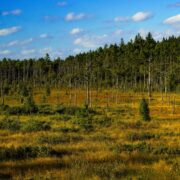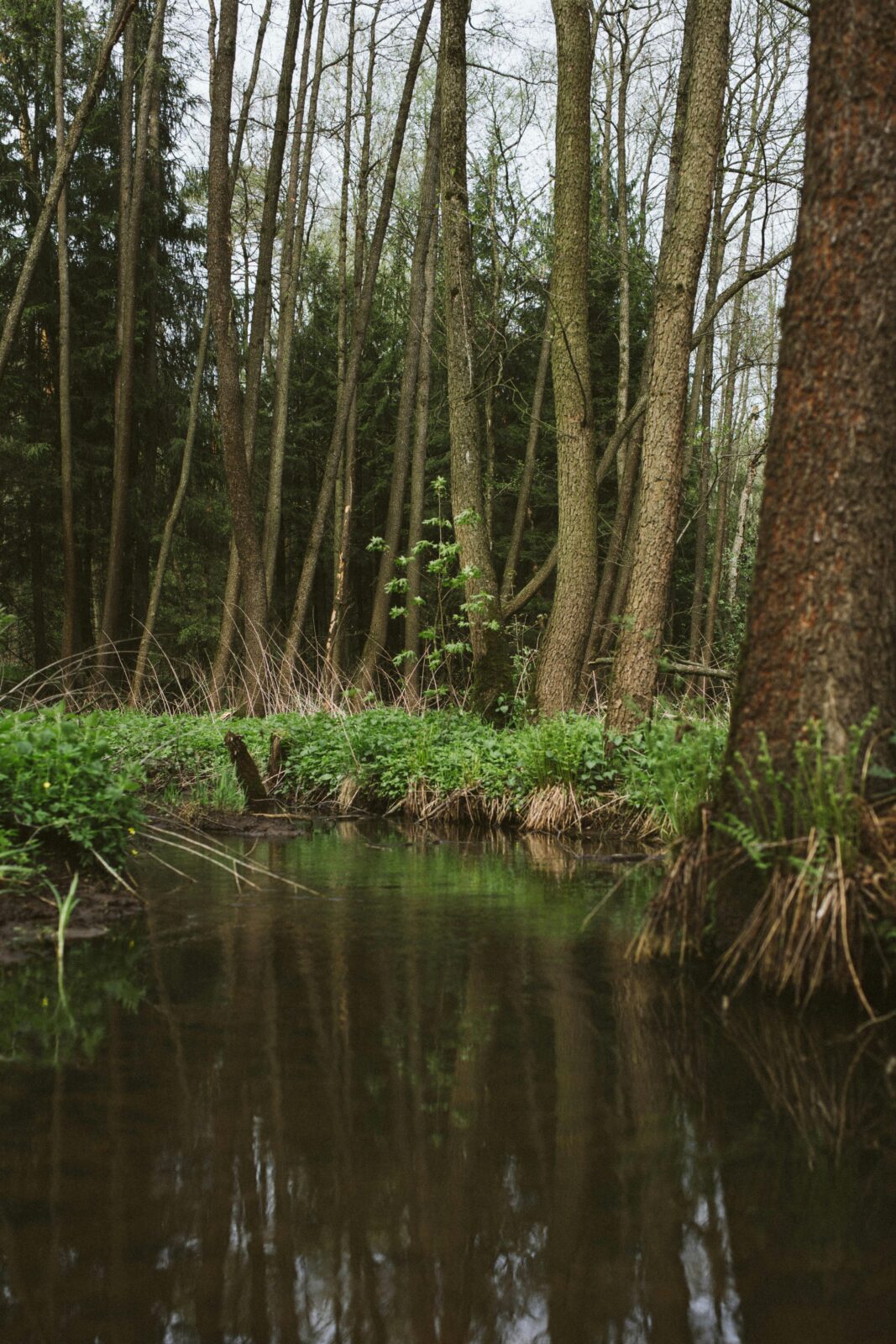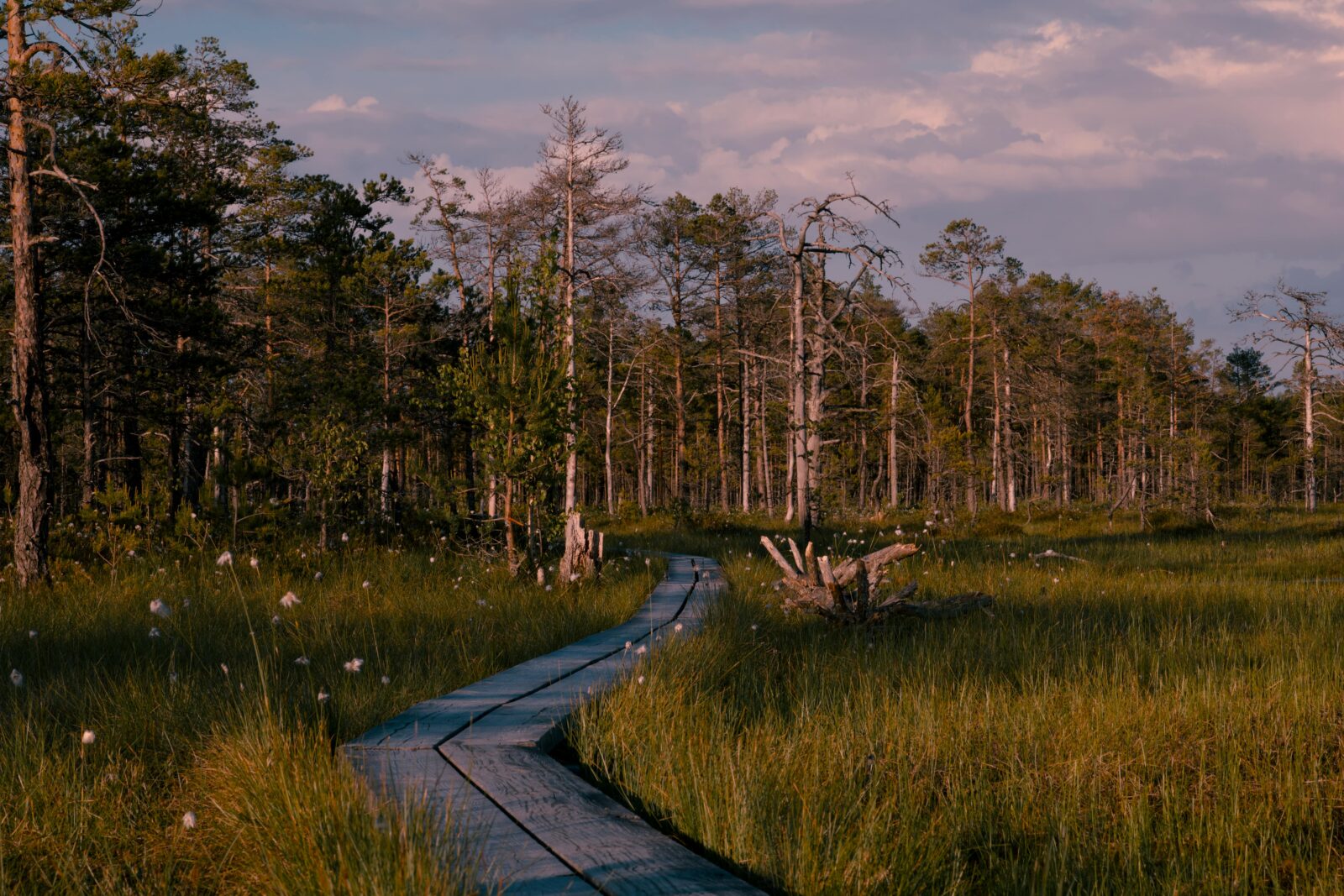WETLAND’S DETECTIVE
How can you tell the difference between swamps, marshes, ponds and peatlands ?
There are four main types of wetlands. Can you identify them when you’re out in nature ? Awaken the detective in you and discover the clues that helps differentiate these so important environments to our planet.
What is a wetland ?
“Les milieux humides constituent l’ensemble des sites saturés d’eau ou inondés pendant une période suffisamment longue pour influencer la nature du sol ou la composition de la végétation.”, MELCCFP [1] .Meaning : Wetlands are sites that are saturated with water or flooded for a period long enough to influence the nature of the soil or the composition of the vegetation.
There are three elements to observe to confirm the presence of a wetland. It’s time to open wide your eyes and pay attention to details. First, look for signs of temporary or permanent water that’s not draining properly. This could be a line of moss on all the tree trunks at the same height. Secondly, in the soil. The presence of water reduces the amount of oxygen available in the soil, and this influences its appearance. For example, the soil may be gray or mottled with rusty colors, or there may be an accumulation of organic matter. Thirdly, look at the plant species present. In a wetland, half of these must be adapted to an excess of water in the soil. Some of these species, like cattails, only grow in wetlands, while others, like the red maple, sometimes grow in wetlands, sometimes elsewhere. Of course, information presented here is general, and a person specializing in the identification of wetlands may observe other elements or note contradictions.
The Seek app is a great tool for identifying plant species – detectives never work alone !
Now that you’ve found the first clues, here’s how to differentiate between the four main types of wetlands you might encounter: swamp, marsh, pond and peatland.
Swamp
Start your investigation by looking at the vegetation. It should be at least 25% dominated by trees and shrubs. Next, there must be a large quantity of groundwater feeding the area. The secret is that most of the groundwater is located at a shallow depth below the surface. [2] You also need to analyze what you see, as the water may only be visible for part of the year at the site. To confirm the presence of a swamp and solve the riddle, the soil must be mineral, for example composed of sand or clay. [4]
Visit the île Saint-Bernard marsh near Châteaugay to discover this special ecosystem !
Marsh
This is a place where vegetation is dominated by herbaceous plants such as grasses. Your discerning eye may also see trees and shrubs, which account for less than 25% of the plants. The marsh is sometimes controlled by water cycles, whether by tides, floods or other events, on a daily, seasonal or once-a-year basis. Your investigation may take longer if you wish to see the complete cycle. On the other hand, when there’s a closed marsh (not linked to a body of water), it’s more the herbaceous vegetation that indicates its presence. Don’t forget to inspect the soil, whether mineral or organic [2] [4] .
Visit the Marais de la Rivière-aux-cerises in Magog to discover a riparian marsh and the species that live there !
Pond
This is a place where water is always present. The water is stagnant as in a lake, but the level necessarily drops to less than 2m during the dry season [3]. Note that less than 25% of the environment is covered by vegetation, since water occupies most of it. Aquatic plants dominate, as they are adapted to an environment where water is constantly present, unlike land plants. If you investigate further, you’ll also discover that ponds are also called “shallow waters”. [4]
Visit the City of Danville’s Burbank Pond to discover these interesting places called marshes !
Peatland
A place where, over a very long period of time, organic matters (dead plants) has accumulated and decomposed very slowly. This investigation will take you back in time! To be called a peatland, this type of wetland must have a minimum surface thickness of 30cm of organic matter [4] . Some peatlands are several meters thick. Peatland are classified according to their water supply, the vegetation they support and much more. When left undisturbed, peat bogs are often peaceful places, provided that black flies and mosquitoes are not too prevalent. As you move around, you’ll sometimes notice a spongy side. Depending on the type of peatland, you’ll see grasses, several species of ericaceous plants such as blueberries and Labrador tea, carnivorous plants and trees such as the black spruce.
Visit the peat bog at Parc Écoforestier de JohnVille in the Eastern Townships to discover this surprising ecosystem !
The plot is now solved! Wetlands are diversified ecosystems that we can recognize. They play many essential ecological roles for nature and humanity. The Quebec government recognizes several ecological functions for wetlands. Do you know them ? The various wetlands can filter water, sequester carbon, provide a home for a multitude of species, constitute a water reserve or act against bank erosion [1] . Let’s protect them with respect and wonder, like a treasure of gold nuggets.
[1] Ministère de l’Environnement, de la Lutte contre les changements climatiques, de la Faune et des Parcs. (2024). Conservation des milieux humides et hydriques. [Online]. https://www.environnement.gouv.qc.ca/eau/rives/milieuxhumides.htm
[2] Groupe de travail national sur les terres humides. (1997). Système de classification des terres humides du canada 2e Édition. Université de Waterloo, Ontario.
[3] Portail des milieux humides et hydriques. (n.d.) Comprendre – Qu’est-ce qu’un milieu humide ?. [Online]. https://www.milieuxhumides.com/comprendre
[4] Lachance, D., G. Fortin et G. Dufour Tremblay (2021). Identification et délimitation des
milieux humides du Québec méridional – version décembre 2021, Québec, ministère
de l’Environnement et de la Lutte contre les changements climatiques, Direction
adjointe de la conservation des milieux humides, 70 p. + annexes, [Online], https://www.environnement.gouv.qc.ca/eau/rives/guide-identif-dellimit-milieux-humides.pdf





